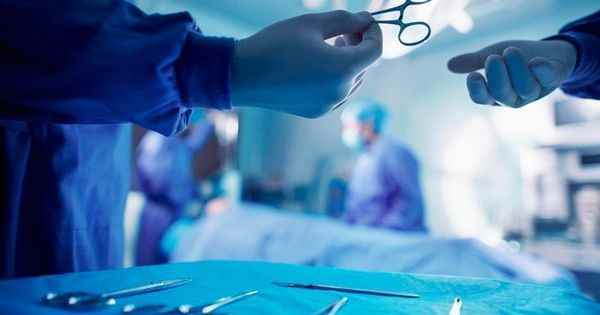Posted ,
Reading 2 mins.
Last October, an inaccessible tumor was removed using an auto-liver transplant technique. A surgical feat from the Institut Montsouris.
A new surgical feat has been achieved at the Institut Mutualiste Montsouris. Last October, Prof. Olivier Soubrane, head of the department of digestive surgery, was able to remove a tumor deemed inaccessible thanks to a liver auto-transplantation technique.
A hypervascularized tumor that encompassed the vena cava
Nathalie, the patient who agreed to testify in a video posted on the establishment’s website, explains that her doctor redirected her to the IMM when a rare liver tumor was detected in her. “The mass was hypervascularizedshe says, and the whole right lobe was affected.” additional problem, “the tumor included the three main veins which irrigate the liver and in particular the vena cava”.
The vena cava has the particularity of draining the venous blood of the lower half of the body and leads it into the right atrium of the heart. To be able to remove the entire tumor, Professor Olivier Soubrane explains that once the mass has been removed, it was necessary to be able to replace all the veins present on the tumor and essential to the functioning of the patient’s body, “and in particular the vena cava”, so that she can always bring the blood to the part of the heart that concerns her.
Consult an oncologist online
“On the one hand, we set up an extra-corporeal circulation, therefore a pump which pumps the blood from the lower part of the body to reinject it just above the heart.”, details the specialist. Then he had to remove the liver from the patient’s body, extract the part of the organ damaged by the tumor as well as the latter, then reconstruct the vessels, the vena cava having been replaced by a prosthesis. Last but not least, the liver was re-implanted. Hence the term self-transplantation.
Today, the patient is doing well, thanks and congratulates the team of the establishment for the success of the operation, but also the “humane” care and the taking into account of the patient’s well-being seriously. at the Montsouris Institute.
While Professor Soubrane congratulates the advances in transplant surgery in his department at the IMM, which enabled him to complete this feat, he emphasizes that if everything went very well for this patient, it is because the right conditions were met. Nathalie was in good shape, not malnourished and had undergone few chemotherapy sessions just before and that is not always the case.
